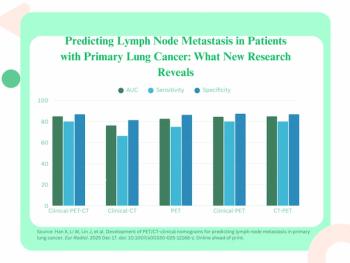
Diagnostic Imaging Europe
- Diagnostic Imaging Europe Vol 26 No 7
- Volume 26
- Issue 7
Radiation increases risk of leukemia for interventionalists
Interventional radiologists have long suspected ionizing radiation has detrimental effects on them, including cataracts, radiodermatitis, and hand depilation.
Interventional radiologists have long suspected ionizing radiation has detrimental effects on them, including cataracts, radiodermatitis, and hand depilation. A study published in the European Journal of Radiology provides proof for those suspicions and expands the exposure risks.
The researchers found the lifetime attributable risk and the excess ratio of radio-induced cancers is appreciable for some cases and some forms of cancer, such as leukemia.
Of 700 workers exposed to ionizing radiation sources, six interventional radiologists from the Universitario Le Fe in Valencia, Spain, all of whom showed symptoms of radiation exposure, were included in the study.
The minimum average excess ratio for skin cancer using wrist physical doses is 1.03 x 10-3; the maximum is 5.06 x 10-2. The range the interventional radiologists experienced is lower than the maximum average, so they were not considered to be at increased risk for skin cancer.
The minimum average excess ratio for leukemia using thermoluminescence dosimeters is 7.84 x 10-2; the maximum is 3.36 x 10-1. Using both the thermoluminescence dosimeters and biological dosimetry, the radiologists were found to be at increased risk for leukemia.
This study reminds radiologists of the risks of working with ionizing radiation, which includes an increased risk of leukemia, said Dr. Robert Vogelzang, past president of the Society of Interventional Radiology, and a professor of radiology at Northwestern University in Chicago, Illinois.
“To me, I take away a simple thing,” he said. “We need to do as much as we can to reduce risk because there are statistically relevant data that show an increased risk for some cancers.”
Should interventional radiologists limit the number of procedures they perform due to the risks involved? Yes and no, according to Vogelzang.
“We have so many imaging modalities, we have to always be aware of the dose we’re using and the number of exams we do,” he said. You have to ask always and every time, ‘is this
necessary?’”
The question has to be asked not only for the patient’s sake, but also for any radiation worker-the radiologist, the technologist, and the nurses standing in the rooms, he said. All are exposed to radiation.
“Awareness of that is really what this is about,” he said. “This is a big issue when it comes to worker and patient safety. It’s that simple. To the degree we see effects, [they] can be attributed to the radiation.”
Vogelzang echoed comments made by the study’s authors.
Because of the observed appreciable risk of leukemia and cancer incidence in the group of radiologists, theoretical and practical education is needed. Training for the medical staff in the cardiology/radiology and nuclear medicine departments is needed, they said.
Training in radiological protection for patients and staff should be an integral part of the education of those using interventional techniques. Risks and benefits, including detrimental effects, should be taken into account when new interventional techniques are introduced, they said.
“This study is not going to prevent me from working in a radiation field, but it’s proof radiation has definable risks,” Vogelzang said.
Articles in this issue
about 15 years ago
Radiologists question whether to treat small pulmonary emboliabout 15 years ago
Overlap shifts help urgent findings communicationabout 15 years ago
Delayed cardiac test saves moneyabout 15 years ago
Incidental findings can predict cardiac diseaseabout 15 years ago
MRI reveals when cognitive impairment will advanceabout 15 years ago
Broad view of heart shows otherwise missed diagnosesabout 15 years ago
Spectral CT beats CT at illuminating heart plaqueabout 15 years ago
California gets landmark dose reporting lawabout 15 years ago
Readers' diagnostic accuracy drops as the day goes onabout 15 years ago
3T MR shows cardiac scarring and vasculatureNewsletter
Stay at the forefront of radiology with the Diagnostic Imaging newsletter, delivering the latest news, clinical insights, and imaging advancements for today’s radiologists.




























